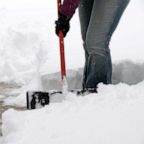When Gauging Age, the Eyes Have It
Feb. 3 -- MONDAY, Feb. 2 (HealthDay News) -- Want to look younger or less tired? Focus on the area around your eyes, a new study suggests, because that's where people get visual clues about your age and level of fatigue.
When asked to estimate the age of people in photographs, participants in a study looked at the eye region almost half the time, researchers found. The number was about the same when the participants tried to figure out how tired people in the photographs were.
The findings might seem obvious, but the study's lead author, a plastic surgeon, said they're important because cosmetic-surgery patients don't always get treatment where they need it.
"They want to look younger and less tired, but if you look to see what's being offered them, it's often not things around the eyes," said Dr. Peter A. D. Rubin, a plastic surgeon in Brookline, Mass., and an associate professor of ophthalmology at the University of Tennessee Health Science Center.
Rubin and his colleagues launched the study to figure out how people gauge age and fatigue. "What better way than to see where are people actually looking when they're making these judgments about things?" he said.
The researchers recruited 47 college students -- 15 men, 32 women -- from the Boston area and told them to look at photographs of 48 older people on a computer monitor. The monitor analyzed reflections from the eye to determine where the study participants were looking. The participants then rated either the age or the fatigue level of the people in the photos.
When gauging the age of people, the students looked at the eye region 46 percent of the time, followed by the nose (19 percent), forehead (13 percent) and the area between the eyebrows (11 percent).
The numbers were similar when the students were trying to figure out how tired the people in the photos appeared.
The study findings were published in the February issue of the journal Ophthalmology.
The eye region makes up just 21 percent of the face, according to the study authors. So why does it seem to reveal so much?




